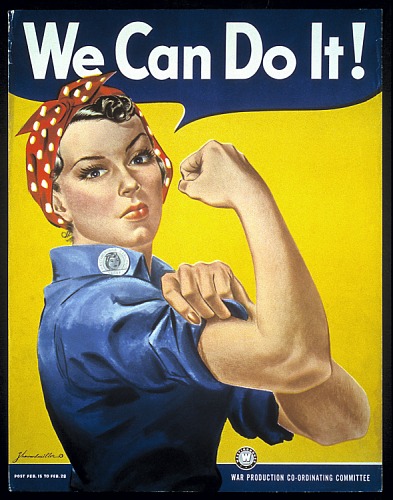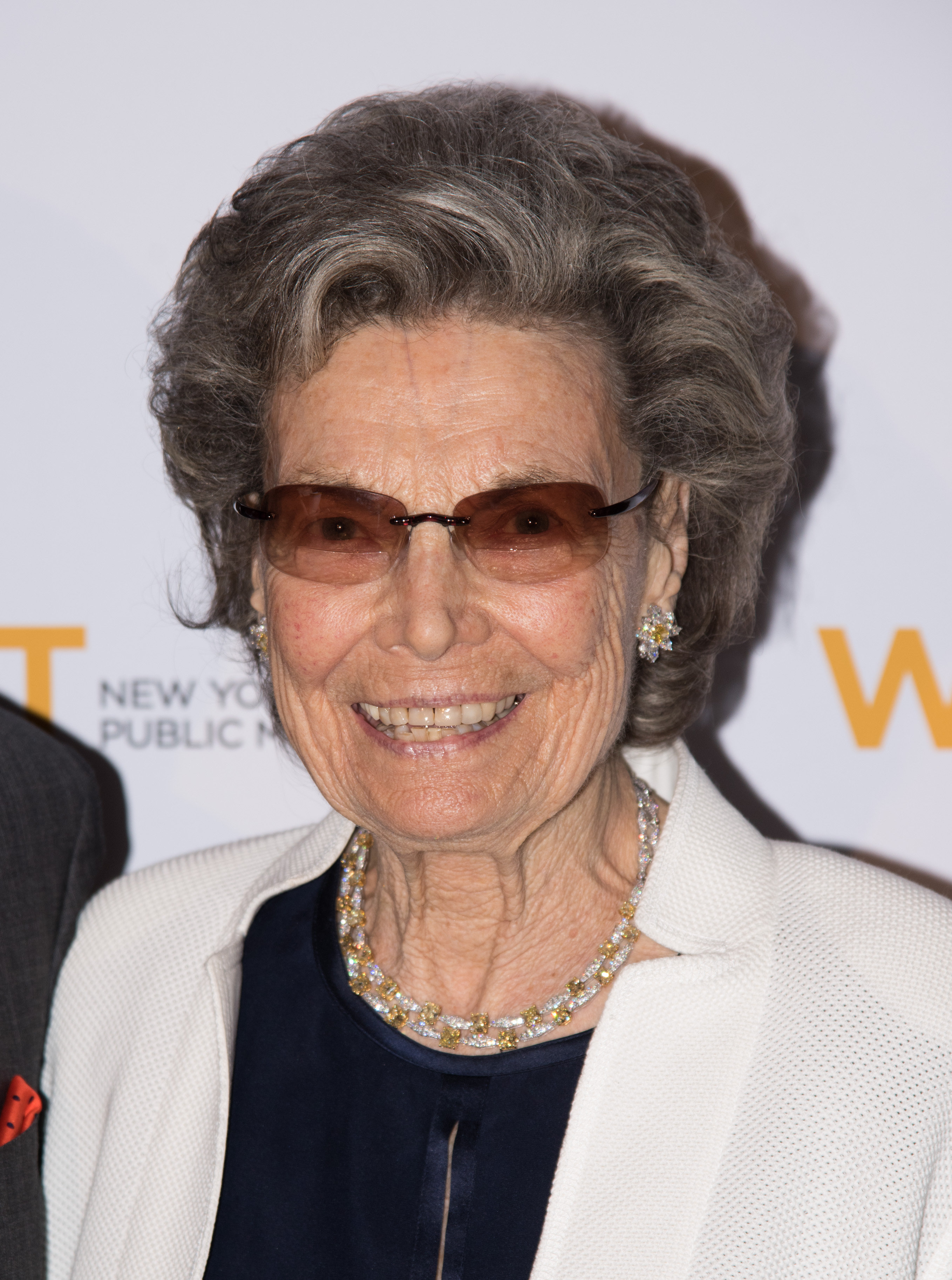“It turns out that almost everything we think about Rosie the Riveter is wrong,” scholar Dr. James J. Kimble told The Omaha World-Herald in 2016. “Wrong. Wrong. Wrong. Wrong. Wrong.”
The hunt for the woman behind the iconic 1943 Rosie the Riveter “We Can Do It!” poster, with her red dotted bandana and denim coveralls, first led to Geraldine Hoff Doyle, a Michigan woman who asserted until her death in 2010 that she was, in fact, the inspiration for Rosie the Riveter.
This claim was upended in 2016 when Kimble identified the lathe worker as Naomi Parker Fraley, who worked on an aircraft assembly plant at the Naval Air Station Alameda.
But she wasn’t the only Rosie.

Mary Doyle Keefe famously modeled for Norman Rockwell’s Saturday Evening Post cover depicting Rosie “with a rivet gun on her lap and “Mein Kampf” crushed gleefully underfoot,” writes the New York Times.
None of these women, however, were the first. That distinction lies with Rosalind P. Walter, who passed away at the age of 95 on Wednesday, March 4.
Walter, born on June 24, 1924 to a prominent and wealthy family from Long Island, was recruited to work at the Vought Aircraft Company in Stratford, Connecticut at the outbreak of the war. Walter worked night shifts, according to her New York Times obituary, “driving rivets into the metal bodies of Corsair fighter planes.”
In 1942, a newspaper column written by Igor Cassini about the young Walter caught the eye of musicians Redd Evans and Jacob Loeb, later inspiring the pair to write the lyrics to “Rosie the Riveter.” Popularized by the Four Vagabonds, the song captures Walter doing the work ordinarily reserved for men:
She’s making history,
working for victory—
Rosie, brrrrrr, the riveter.
Keeps a sharp lookout for sabotage
Sitting up there on the fuselage.
That little frail can do more than a male can do—
Rosie, brrrrrr, the riveter.
Rosie’s got a boyfriend, Charlie.
Charlie, he’s a Marine.
Rosie is protecting
Charlie, workin’
overtime on the
riveting machine.
Rosie the Riveter would became the archetype image to represent strong and capable women contributing to the war effort on the home front.
By war’s end, Walter was working as a nurse’s aide at Bellevue Hospital and married to Lt. Henry S. Thompson, a Naval Reservist. The couple would divorce in the 1950s, with Walter remarrying successful businessman Henry Glendon Walter Jr., president and later chairman of International Flavors and Fragrances.
Her father, Carleton Humphreys Palmer, was president of E.R. Squibb and Sons during WWII, which was one of the first companies to help mass produce and distribute penicillin, the newly developed and life-saving medicine.
Walter became one of PBS’s principal benefactors and the largest individual supporter of WNET in New York. Since 1978 she helped to finance 67 shows or series, the New York Times writes.
Walter is survived by her son, Henry S. Thompson, two grandchildren, four step-grandchildren, and several step-great-grandchildren
She will forever remain, however, the original Rosie.

